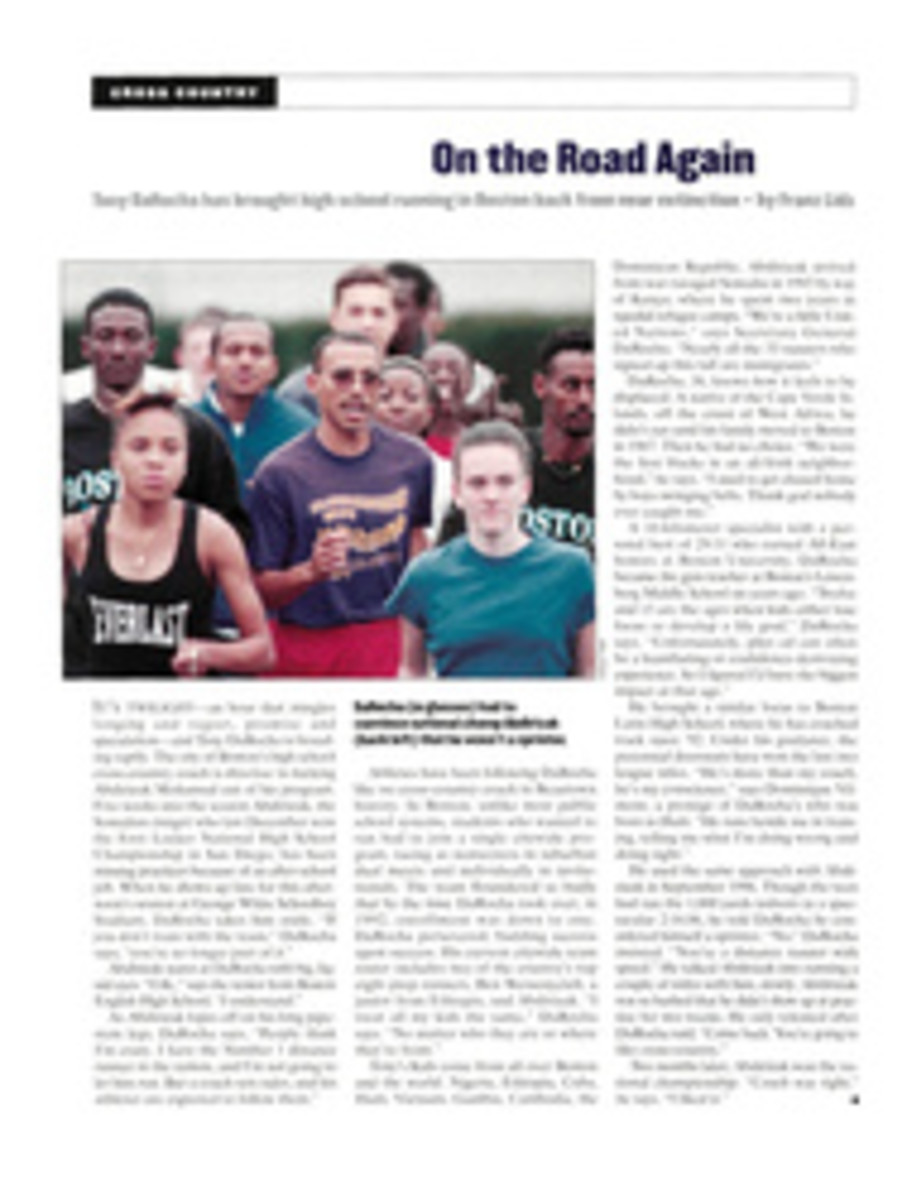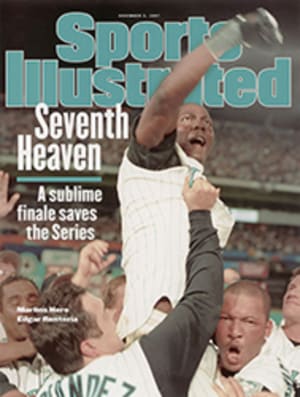
TOY STORY MULTISPORT STAR JOHNNY HERO WAS THE GRANDDADDY OF TODAY'S SPORTS ACTION FIGURES
I'll admit it. While growing up in the '60s, I played with
dolls. I carefully dressed them, posed them, lined them up on
the green carpet in my parent's living room...and smashed them
into each other. It wasn't Barbie and Ken or even an army of
G.I. Joes that ended up in a heap on the floor. Usually it was
the Chicago Bears' Dick Butkus lying next to an unnamed New York
Giants defender as my Philadelphia Eagles hero, Pete Retzlaff,
ran over them on his way to a touchdown.
My imagination was hyperactive, but I had a lot of help. I was
playing with Johnny Hero--"The All American Athlete."
Technically, Johnny Hero was an action figure (a boy's doll).
His blue eyes, crew cut and stoic expression were unveiled in
the 1965 Sears Christmas catalog, in which he was offered at
$2.97, as the "6-foot-6 hero of your favorite sport." Standing
13 inches tall (one inch taller than G.I. Joe!), with a foam
latex body molded over a bendable wire frame, Johnny was quite
impressive. Even more impressive were his accessories: 39
officially licensed and authentically detailed uniforms of teams
from the NFL, the AFL and Major League Baseball.
"Johnny Hero was made by Rosko-Steele, Inc., of New York City,"
says Roger Atkin, vice president of retail sales at NFL
Properties. Atkin began his career with the NFL in 1969 and is
the only person remaining at NFL Properties who remembers
Johnny. "He's pictured in the 1965 NFL merchandising catalog
with a detailed description of his uniforms."
Unfortunately, Johnny's career as the first mass-marketed action
figure with professional sports licensing was brief (about
1965-68), but his legacy lives on.
"Johnny Hero opened the door for sports-figure merchandising,"
says John Marshall, author of G.I. Joe and Other Backyard Heroes
(1970-1979). Marshall, now working on a book on '60s action
figures that includes a chapter on Johnny Hero, thinks Johnny
was ahead of his time. "He has influenced every sports action
figure made since 1965," Marshall says, "from the Joe Namath,
Muhammad Ali and Dr. J figures of the '70s to the Starting
Lineup and Space Jam figures of the '90s."
John Koenig, editor and publisher of Toy Trader magazine, says
Johnny Hero's ability to assume many identities, to change from
baseball player to football player, links him to a modern
superstar. "He's really the action figure equivalent of Deion
Sanders," he says.
Marshall considers Johnny Hero one of the seminal action
figures. "He was there in the beginning," says Marshall,
referring to the fact that Johnny appeared just a year after
G.I. Joe. "He's been long overlooked by both toy and sports
collectors."
Chuck Eckles of Pasadena, Md., hasn't overlooked Johnny Hero.
Eckles, who first saw Johnny in 1990 at an antiques show, now
owns one of the largest collections of Johnnys in the country,
with a floor-to-ceiling display of 30 figures and all but two of
the uniforms ever made.
"The first figure I saw had an authentic old-time [Baltimore]
Orioles uniform on," says Eckles. "I said, 'Wow, what is that?'"
While Eckles missed his chance to buy that Johnny Hero, he's
more than made up for it over the last seven years, paying from
$10 to $60 for each. But it hasn't been easy. Most collectibles
dealers don't even know who Johnny is.
For Eckles, authentic details such as the realistic helmets and
satin pants of the football uniforms or the pinstripes on the
baseball uniforms make Johnny special. Eckles considers the
Denver Broncos uniform with a bright orange helmet and white
bucking-horse logo the most striking piece in his collection.
How would Johnny Hero do in an era of Dennis Rodman action
figures with silver boots and interchangeable heads? Marshall
and Koenig think he would do pretty well. "There's nothing
comparable out today," says Marshall, and Koenig agrees, adding
that the success of Starting Lineup's sports action figures
shows there could well be a market for a versatile
top-of-the-line item like Johnny Hero.
Eckles is less optimistic and thinks Johnny's success would
depend on whether he was marketed as a toy or a collectible. "He
was just a kids' toy," says Eckles. "Could you make something of
that quality affordable for kids in 1997?"
That's the difference between Johnny and modern action figures.
"Kids today are afraid to even take the price sticker off a
Starting Lineup package because it'll no longer be in mint
condition," says Marshall. "Johnny Hero is from a more innocent
time, when kids bought toys to play with and get dirty." And
when boys like me played with dolls.
Freelance writer Earl Shores is working on a book about the
history of electric football games.
COLOR PHOTO: EARL SHORES Just like Deion, Johnny suited up for both baseball and football. [Three Johnny Hero dolls]

